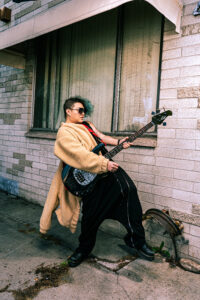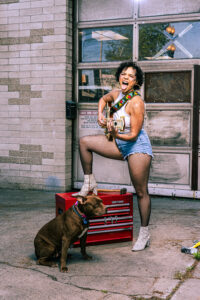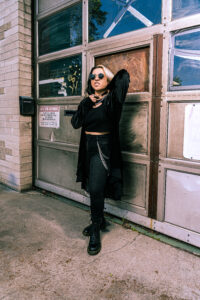In the long history of films that aren’t explicitly queer but very much could be, 1991’s Thelma & Louise easily takes a spot among the greats. The intense bond between the two main characters is undeniable. Throughout the film, Louise (portrayed by Susan Sarandon) and Thelma (portrayed by Geena Davis) promise unwavering loyalty to one another again and again: Louise kills a man to stop Thelma’s assault, Thelma agrees to run away to Mexico with Louise, Thelma robs a convenience store to replace Louise’s stolen cash, and — ultimately — the two clasp hands, share a kiss, and agree to end their story with a nose dive into the Grand Canyon.
But what if Thelma and Louise could write their own ending? What would life look like if they had the option to end their story with some sort of joy? That’s the question creative team EllaRose Chary and Brandon James Gwinn seek to answer in their new project, TL;DR.
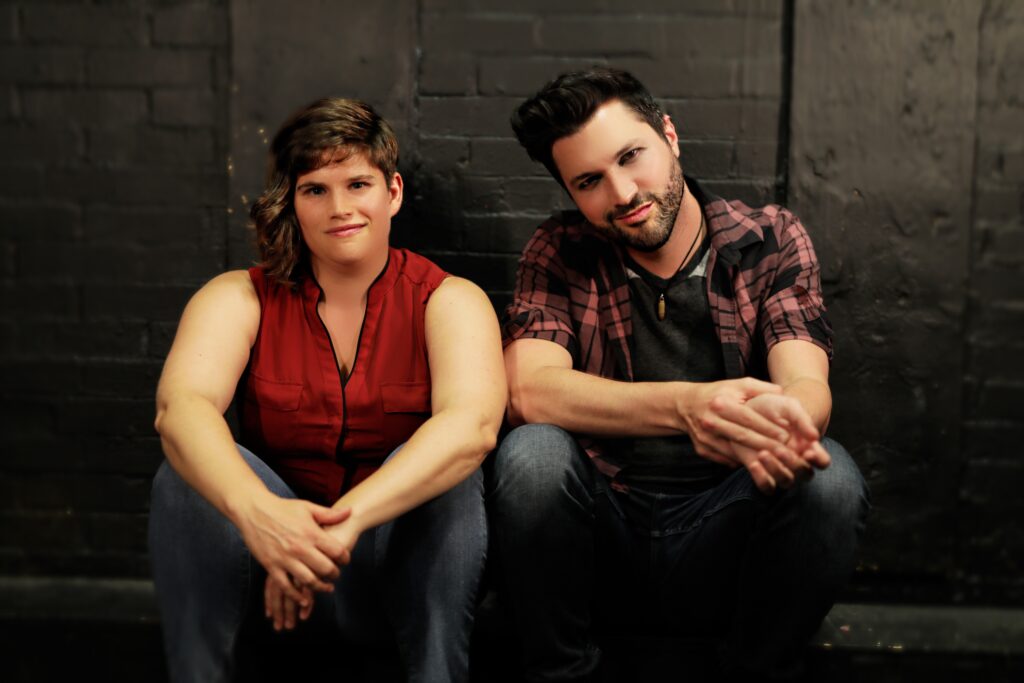
ALTERNATE ENDING = ALTERNATE REALITY
TL;DR (which stands for Thelma Louise; Dyke Remix) is a fantastical rock musical that sees T & L go in search of their own queer happy ending. Chary wrote the book (dialogue and story) for the musical, while Gwinn wrote the music. The two collaborated on lyrics, resulting in a super queer, amazingly referential soundtrack with songs like, “U-Haul” and “Boy Shorts.
The musical begins when a punk rock dyke band interrupts T & L as they sit in their convertible, suspended in mid-air. The band is determined to create the queer storyline they always believed was the heart of Thelma & Louise. “It’s a little bit of a fanfic. It’s an imagining of what happens when strong female characters don’t always gotta die and instead get to have an adventure,” Chary says.
Like any good fanfic, the rules of reality are suspended and anything is possible on stage. “It’s not very linear. T and L kind of jump from universe to universe. That influences the music, and so the music kind of goes with them and to all these different styles,” says Gwinn, who lists Bikini Kill, The Donnas, the Go-Gos, Lady Gaga, Melissa Etheridge, Tegan and Sara, Dar Williams, Kacey Musgraves, and Brandi Carlile as influences for the score.
“If there is a fabulous woman+ entertainer in pop music over the past 50 years, they are influencing us to make this musical world,” Gwinn shares.
In fact, the musical was born of song. While serving as writers in residence at Ars Nova, Chary and Gwinn were given a prompt to “bring in a beginning.” The duo decided to take a famous ending — one that couldn’t possibly be a new beginning — and make it into one anyway. Gwinn suggested Thelma & Louise.
“I said, ‘Well if we’re going to get down in the weeds for a second life, they have to be gay,” Chary shares. The exercise resulted in the song “Fireball” and the birth of the project that would eventually evolve into TL;DR.
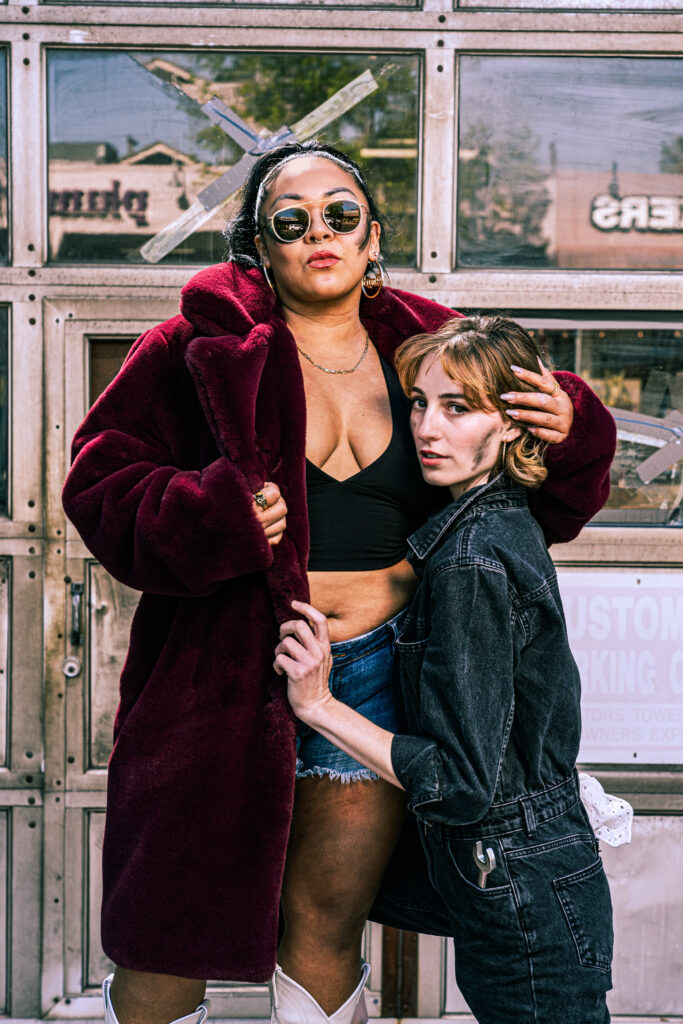
TL;DR IS GAY… LIKE, REALLY REALLY GAY
From the very first chords of the musical, it’s clear that TL;DR is a love letter to the queer community from two queer artists. The first song bemoans the “bury your gays,” trope in TV and film. Throughout the show, Chary’s script delivers hilarious references to longstanding sapphic cultural touchstones, from the joke that every new lesbian gets a free toaster to messy polycules to tarot readings at the local LGBTQ+ center and everything in between. However, the humor never crosses the line into stereotyping.
Actor Faith Carrion, who plays percussionist Henrietta in the band (and — full disclosure — is my wife) says that’s one of the things they most love about the show. “No one character is truly an archetype. There are some fun references, where viewers can say, ‘Oh, I’ve dated this girl,’ but no one is stereotyped,” Carrion says.
“We’ve [the cast has] been given room and been allowed to bring bits of ourselves to these characters as well,” Carrion continues.
Gwinn explains that the show was written specifically to allow that bleeding over between the performers and their characters. “We talked about how there can’t really be hard and fast assignments for who plays what and what kind of person each character is because the selection of the band members is as crucial a choice as any other creative choice in this process,” Gwinn says.
There are only six characters in TL;DR — T, L, and the four band members: Marie, Cubby, Henrietta, and Blazer — and the writers wanted to leave as much space for diversity as possible. “We want to cast diversely, and I don’t just mean racially diverse, but like a diversity of people in as many pockets of the queer community as possible — gender diverse, diverse abilities, all of that. We want to leave room for the true meaning of the word diversity, not the coding of that word to just mean ‘not white,” Chary says.
This sort of intentionality is woven tightly into the fabric of TL;DR. “This [musical] is not for the straight male gaze. It’s very rare that I, as a fat actor, would even be invited into the room, let alone that I would actually be cast in this show, but particularly, especially, when I got called in to audition for T. It was such a mind-blowing experience for me as an actor.”
Though Carrion was eventually cast as a member of the band, the difference in casting a show written with sapphic viewers in mind isn’t lost on them. “Even playing Henrietta… all of her moments are like the most sexually charged moments in the show. So Faith the person is like, ‘Yes, I love this!” it’s just been amazing,” they say.
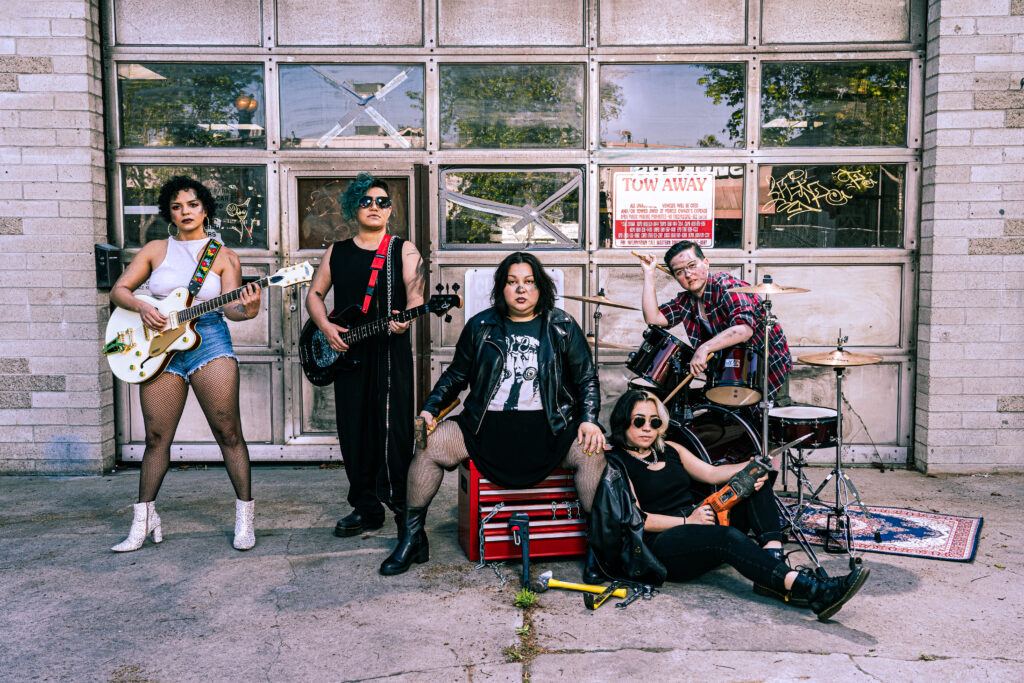
ALL ARE WELCOME
Though the musical is born out of a very gay place, it’s not just for queer folks. “Above all TL;DR is a story about community, about finding yourself within your community, what it means to be queer, and what it means to join the queer community,” Chary says.
The queer community isn’t a monolith, and the musical really explores that. “What is a happy ending? Do we all want the same thing? And if we don’t, how do we reconcile that as a community?” Chary asks.
As they’ve developed the show, Chary and Gwinn have been surprised by the reception from those outside of the queer community. “The response has been really kind across demographics. Last year, we had a lot of straight women become fans.” Gwinn says.
“They’re the average theater ticket buyer,” Chary explains. “They’re in their 50s, they liked Thelma & Louise, and maybe they feel like heternormativity is not their thing either. And they kind of want to run off with their best friend too.”
During the pandemic, the pair performed a few of the songs at an event at The Fountain Theatre in Los Angeles. Afterward, they were approached by an older, married, straight white couple, and the husband said he really liked their song “Boy Shorts.” Though “Boy Shorts” is about figuring out if you’re gay enough to be gay, this man took the time to tell the two that he really connected to the message. He told them, “Anybody can relate to feeling like their not quite enough to be part of whatever community they’re part of.”
Remembering the moment, Chary says, “Even though he didn’t know any of the references in the song, he was like, ‘I get it.’”
HOW YOU CAN SEE T, L, & THE BAND
TL;DR will have its world premiere at Diversionary Theatre, one of the nation’s only LGBTQ+ theatres, in San Diego, CA, and run from May 18 to June 9, 2024.
Eventually, Chary and Gwinn hope to see it performed much more widely. “I would like this musical to play in every community that has queer folks that would enjoy it, or learn from it, or and be in conversation with it, or cry because it exists, or laugh because it exists,” Gwinn says.
While he believes the show has the capacity to make it to Broadway, Gwinn says that’s not as important to him as doing productions that include the queer community in locations where the musical is being performed.
For Chary, the goal is to get TL;DR to a wider audience. “Almost like all students across the country could do the show in their hometown, or, you know, in their college and they could local productions. This is how we get it to all the people we made it for,” she says.
For the time being, the only place to see the show is at Diversionary, so If you live in Southern California, grab a seat to see TL;DR before the end of its run. Gwinn says to would-be viewers, “If you love musicals, you’ll love the show. And if you love rock and roll, you’ll love the show. And if you love punk rock and if you love dykes… If you’re like hot people, if you like smart people who are really talented, then you’ll like the show.” I couldn’t agree more.



